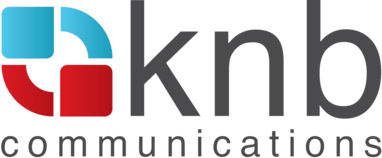Even the most introverted and ego-free people will agree — there’s nothing quite like seeing your name in print. Being quoted as an expert in your field is often a goosebump-inducing experience. It’s gratifying when your words are immortalized in the newspaper, in a magazine, or on TV.
But the leap from expert to quoted expert can be a bit of a distance, especially in healthcare. To help cover what can sometimes be a vast expanse, we asked our media relations team to weigh in.
The KNB media team is comprised of recovering journalists who worked in some of the country’s top newsrooms before transitioning to the other side of the microphone. Each one of them has over 15 years of experience working with media. They’ve spent their careers chasing great quotes, providing great quotes, and training their clients how to deliver great quotes. Here’s their collective advice:
Say something memorable. Quotes are the “muscle” of a story, so flex them. A quote should reveal something interesting, emphasize a point, or offer a contrarian opinion.
- Leave the yoga babble behind. Avoid using meaningless corporate buzzwords like “synergy” and “customer centric.” Instead use descriptive words that resonate with your target audience and add value to your message.
- Use analogies, anecdotes, and metaphors. Easy-to-understand parallels are a fantastic way to explain something, especially the more technical topics that are common in health tech.
- Evoke emotion and grab attention. Avoid dry, academic-sounding stats and numbers. When appropriate, offering a witty or clever line is always more quotable than dull facts and figures.
- Show your personality. Be conversational and decisive about where you stand and what you believe in. No one should ever finish reading an article and wonder what you think.
- Avoid sales lingo. Journalists are not an extension of your sales team; their goal is to tell a story, not influence a purchase decision.
Still not sure what we mean? Here’s an example that encapsulates most of the tips above.
When meeting with select senators shortly after the September 11th terrorist attacks, then President George W. Bush famously assured them, “When I take action, I’m not going to fire a $2 million missile at a $10 empty tent and hit a camel in the butt. It’s going to be decisive.”
Too often, a watered-down, lawyer-approved version of the same message is delivered instead. And no editor wants to print, “I plan to consult with the US military and use appropriate force.” It might mean the same thing, but it’s not nearly as quotable.



.png)
.png?width=87&height=87&name=KNB%20marketing%20%20employee%20team%20bios%20%20meet%20your%20team%20(7).png)





